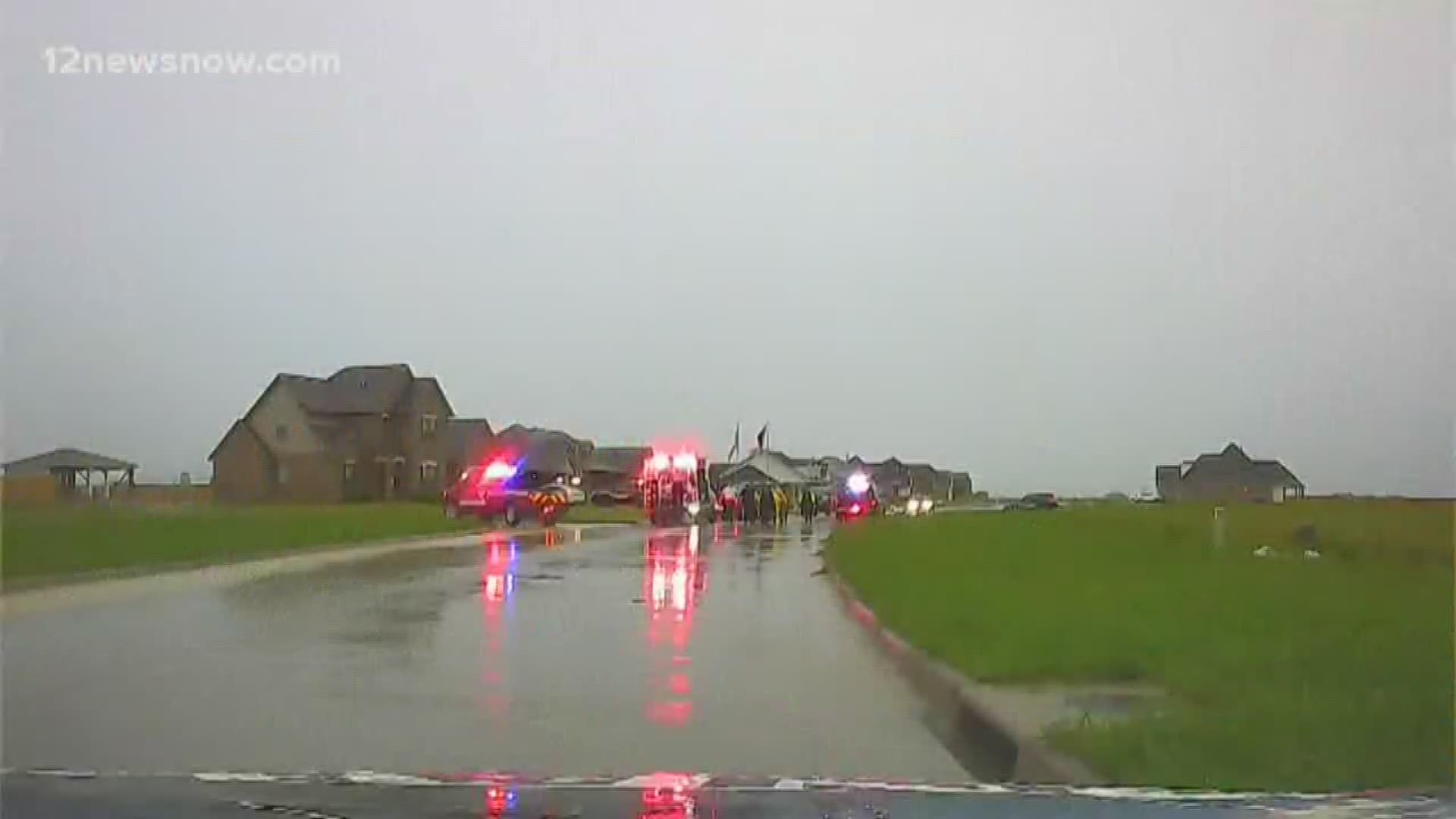CHINA, Texas — A man working on a construction project in west Jefferson County remains unresponsive in a Southeast Texas hospital a day after reportedly being struck by lightning.
The man was working at a home in the Diamond D Ranch subdivision along U.S. Highway 90 near China when he was injured Wednesday afternoon.
As of Thursday afternoon he was stable but in critical condition according to a family member.
Doctors told the family that while there were no visible burns on his body he could have been injured by the lightning strike due to “vibration or static” from the strike the family member told 12News.
He has suffered two cardiac arrests and remains at Christus St. Elizabeth Hospital in Beaumont according to family.
A Jefferson County Sheriff’s deputy who arrived on the scene first performed CPR on the man until medics arrived.
In the United States an average of 47 people are killed and hundreds are injured yearly by lightning strikes according to the National Weather Service website.
Lightning strikes in the U.S. about 25 million times a year mainly in the summer months though strikes can occur year-round the National Weather service says.
Besides a direct strike there are four more ways a person can be severely injured or killed by a lightning strike according to the National Weather Service.
These include a direct strike, side flash, ground current, conduction, and streamers
A 32-year-old South Carolina man became the first lightning death of this year when he was struck at home while getting out of his car on May 5, 2020, according to the weather service.
Twenty people were killed by lightning in 2020 with three of them being in Texas.
Here’s a look at the five types of lightning strikes….
(SOURCE: National Weather Service)
Direct Strike
A person struck directly by lightning becomes a part of the main lightning discharge channel. Most often, direct strikes occur to victims who are in open areas. Direct strikes are not as common as the other ways people are struck by lightning, but they are potentially the most deadly. In most direct strikes, a portion of the current moves along and just over the skin surface (called flashover) and a portion of the current moves through the body--usually through the cardiovascular and/or nervous systems. The heat produced when lightning moves over the skin can produce burns, but the current moving through the body is of greatest concern. While the ability to survive any lightning strike is related to immediate medical attention, the amount of current moving through the body is also a factor.
Side Flash
A side flash (also called a side splash) occurs when lightning strikes a taller object near the victim and a portion of the current jumps from the taller object to the victim. In essence, the person acts as a “short circuit” for some of the energy in the lightning discharge. Side flashes generally occur when the victim is within a foot or two of the object that is struck. Most often, side flash victims have taken shelter under a tree to avoid rain or hail.
Ground Current
When lightning strikes a tree or other object, much of the energy travels outward from the strike in and along the surface of the ground. This is known as the ground current. Anyone outside near a lightning strike is potentially a victim of ground current. In addition, ground current can travel in garage floors with conductive materials. Because the ground current affects a much larger area than the other causes of lightning casualties, the ground current causes the most lightning deaths and injuries. Ground current also kills many farm animals. Typically, the lightning enters the body at the contact point closest to the lightning strike, travels through the cardiovascular and/or nervous systems, and exits the body at the contact point farthest from the lightning. The greater the distance between contact points, the greater the potential for death or serious injury. Because large farm animals have a relatively large body-span, ground current from a nearby lightning strike is often fatal to livestock.
Conduction
Lightning can travel long distances in wires or other metal surfaces. Metal does not attract lightning, but it provides a path for the lightning to follow. Most indoor lightning casualties and some outdoor casualties are due to conduction. Whether inside or outside, anyone in contact with anything connected to metal wires, plumbing, or metal surfaces that extend outside is at risk. This includes anything that plugs into an electrical outlet, water faucets and showers, corded phones, and windows and doors.
Streamers
While not as common as the other types of lightning injuries, people caught in “streamers” are at risk of being killed or injured by lightning. Streamers develop as the downward-moving leader approaches the ground. Typically, only one of the streamers makes contact with the leader as it approaches the ground and provides the path for the bright return stroke; however, when the main channel discharges, so do all the other streamers in the area. If a person is part of one of these streamers, they could be killed or injured during the streamer discharge even though the lightning channel was not completed between the cloud and the upward streamer.


